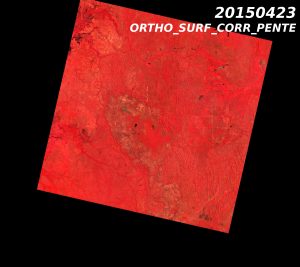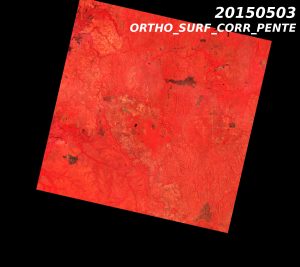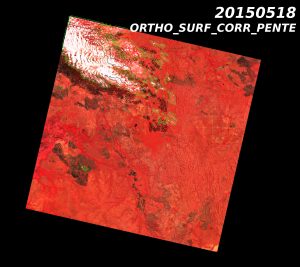Level 1 : 1 mn, Level 2 : 2 mn
![]() =>
=> ![]() These figures are the overall rhythm of production for SPOT5 (Take5) for Level 1C and level 2A production, in the MUSCATE factory within the CNES computing center. But it is a pity that conditioning the data to upload them on the distribution center (https://spot-take5.org) is in fact much longer (several minutes per product). It is interesting to see that in the present implementation of our ground segment prototype, the processing time is negligible compared to the preparation and upload times. We now know where to invest in the near future. As a result, all the SPOT5 (Take5) data acquired until end of may have been processed, and they should appear soon on the distribution server, but they are not yet there. We still have to ask for some more patience. To help you wait, here are a few Level2A images acquired over Litchfield site in Australia. If you click on the images, you will see that dark zones progressively appear, which are not cloud shadows, but probably due to bush fires. On the 28th of April, smoke is visible (its shadow is not detected, we still need to enhance our method).
These figures are the overall rhythm of production for SPOT5 (Take5) for Level 1C and level 2A production, in the MUSCATE factory within the CNES computing center. But it is a pity that conditioning the data to upload them on the distribution center (https://spot-take5.org) is in fact much longer (several minutes per product). It is interesting to see that in the present implementation of our ground segment prototype, the processing time is negligible compared to the preparation and upload times. We now know where to invest in the near future. As a result, all the SPOT5 (Take5) data acquired until end of may have been processed, and they should appear soon on the distribution server, but they are not yet there. We still have to ask for some more patience. To help you wait, here are a few Level2A images acquired over Litchfield site in Australia. If you click on the images, you will see that dark zones progressively appear, which are not cloud shadows, but probably due to bush fires. On the 28th of April, smoke is visible (its shadow is not detected, we still need to enhance our method).















